Versions Compared
Key
- This line was added.
- This line was removed.
- Formatting was changed.
Hierarchy view provides a quick view of alignments, key results, Jira issues as KRs and actions associated with objectives at all levels. On the hierarchy view page you can see objective hierarchy in can two different views.
Hierarchy view
Explorer view
Click on ' hierarchy view' menu item in 'objectives and KR' section of Employee Success tab menu item on OKR page from the UpRaise menu.
 Image Removed
Image Removed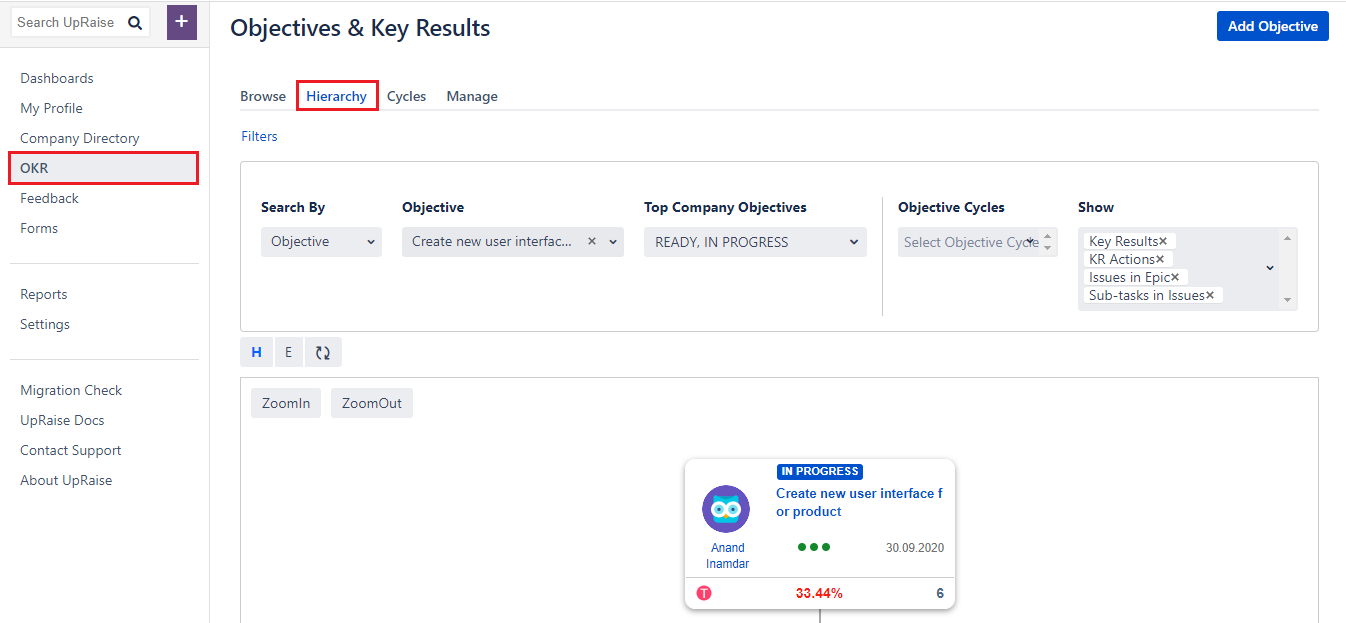 Image Added
Image Added
| Info | icon | false
|---|
If you do not see Hierarchy view, it is possible that your multiple contributing alignment alignments is turned on. Read Alignments. |
Hierarchy view
Once objectives are aligned, you can view these alignments in a broader and better way from 'hierarchy from hierarchy view' option. You can see in the image below, "Company Objective 12" receives a contribution from another objective i.e "Team objective 1" & this "Team objective 1" is receiving a contribution from another objective at different level i.e. "Individual objective 1". There one more company objective i.e."Company objective 21" which receives contribution from "three other team objectives". 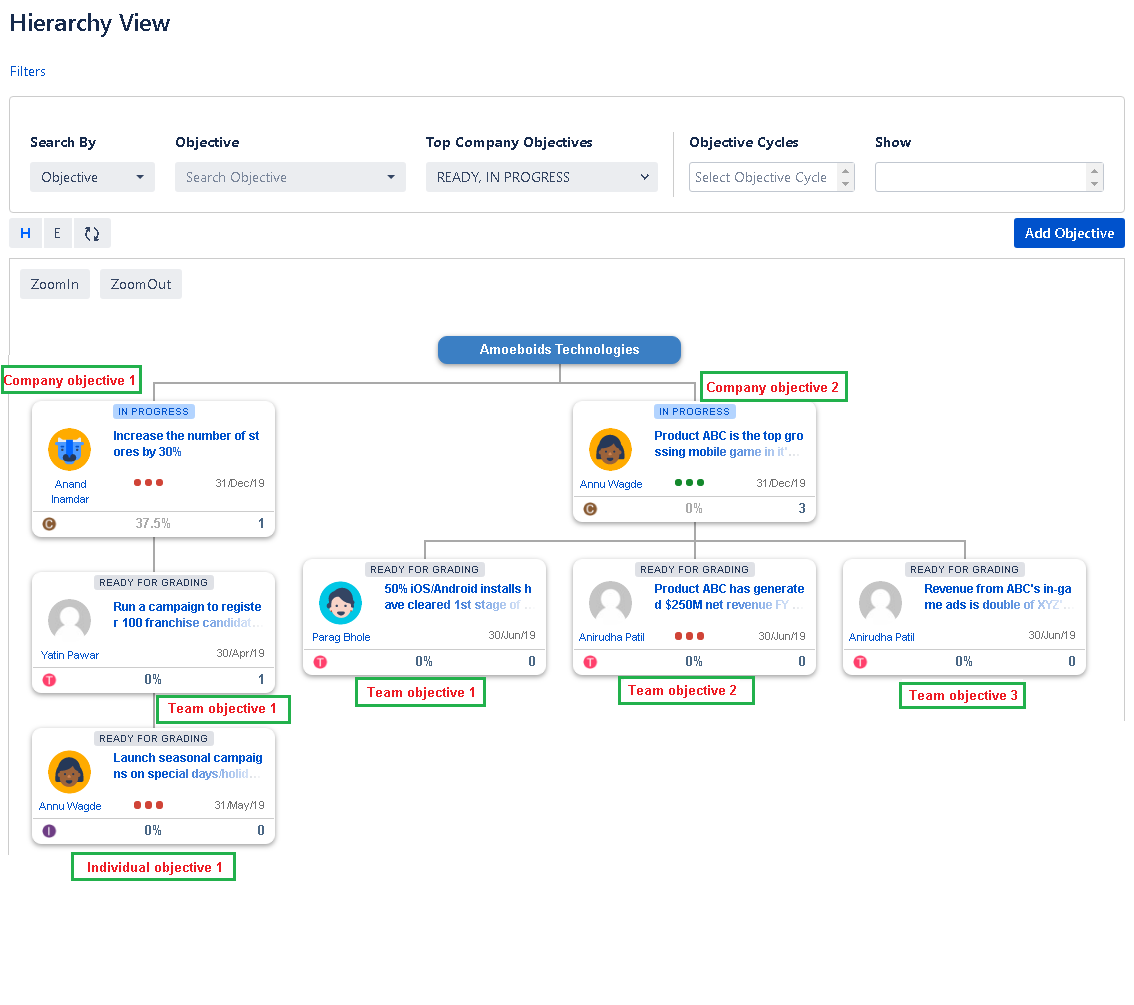 Image Removed
Image Removed
 Image Added
Image AddedExplorer view
In explorer view one can see same objectives but in a different format. Here you can see a list view of the objective alignment that you can expand further for relevant objectives. As shown in the image, you can see those same objectives can be viewed in different way.  Image Removed
Image Removed
 Image Added
Image AddedYou can also check associated KRs of objectives at different levels on 'hierarchy view' page. Employee Success UpRaise has a filter on hierarchy view page that lets you decide if you want to see KRs of objectives in this view or want to hide them. For eg. If you have overall 100+ KRs in the system, then it becomes difficult to toggle between KRs and alignments, that is the reason we have given an option to filter this view. Once filtered, the system will remember that selection and when you come back 'hierarchy view' page next time you will see the same filtered view on hierarchy view page. Let us see what all filters you can apply to hierarchy and explorer views.
What type of filters can be applied for objectives on hierarchy view on hierarchy view page?
You can filter objectives using different filters like filter by particular objective, team or objective owner. Also, you can filter objectives by the status of the top company objective, particular objective cycle, showing or hiding key results, Jira issues within epics, number of subtasks within Jira issue or KR actions. Let us see all of these options one by one in detail.
Search by
Search by option allows you to filter the view by objective, owner or team. Depending on the selected filters you would be able to select other relevant filters.
Search by objective - Objectives & alignments are displayed for selected objective
Search by owner - Objectives & alignments are displayed for selected objective owner
Search by team - Objectives & alignments are displayed for selected team
 Image Removed
Image Removed Image AddedTo
Image AddedTo Top company objective (objective status filter)
You can use the top company objectives filter to check objective alignments of different top company objectives in selected status/es. Just click on top company objectives field and check/uncheck one of the multiple statuses from the drop-down. You will see all the top objectives are reflected according to the objective statuses you have selected.
The reason why this filter only applies to the 'top company objectives' is - if we apply the same filter at all levels, it may end up hiding OKRs that do not match the filter. They are hidden just because at least one of the objectives in their hierarchy matches the status filters.
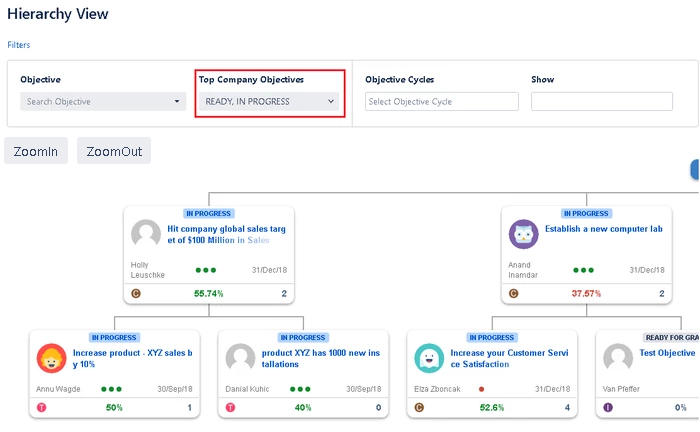 Image Removed
Image Removed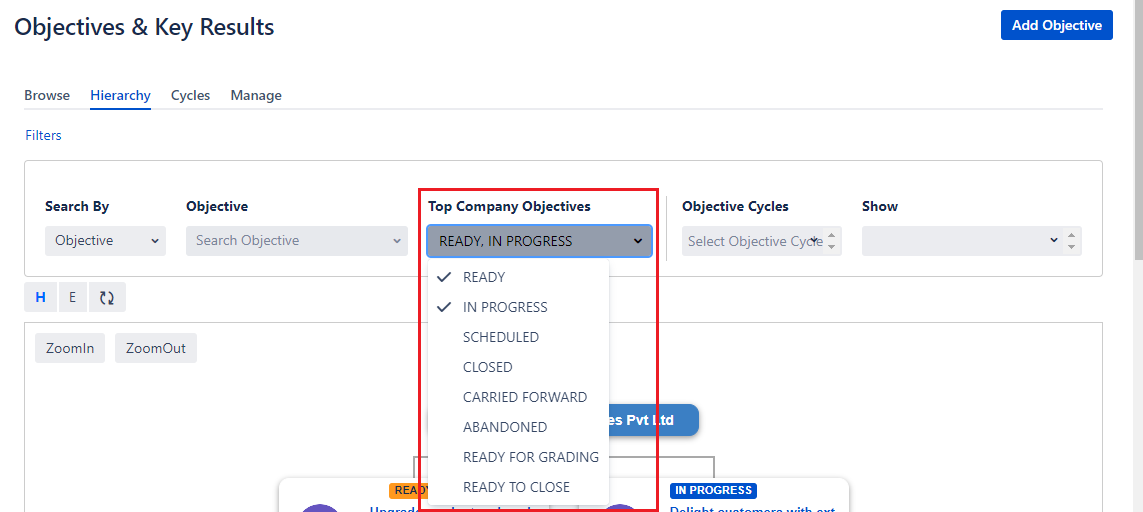 Image Added
Image Added
Objective cycle
This filter is used to display objectives from a specific objective cycle.
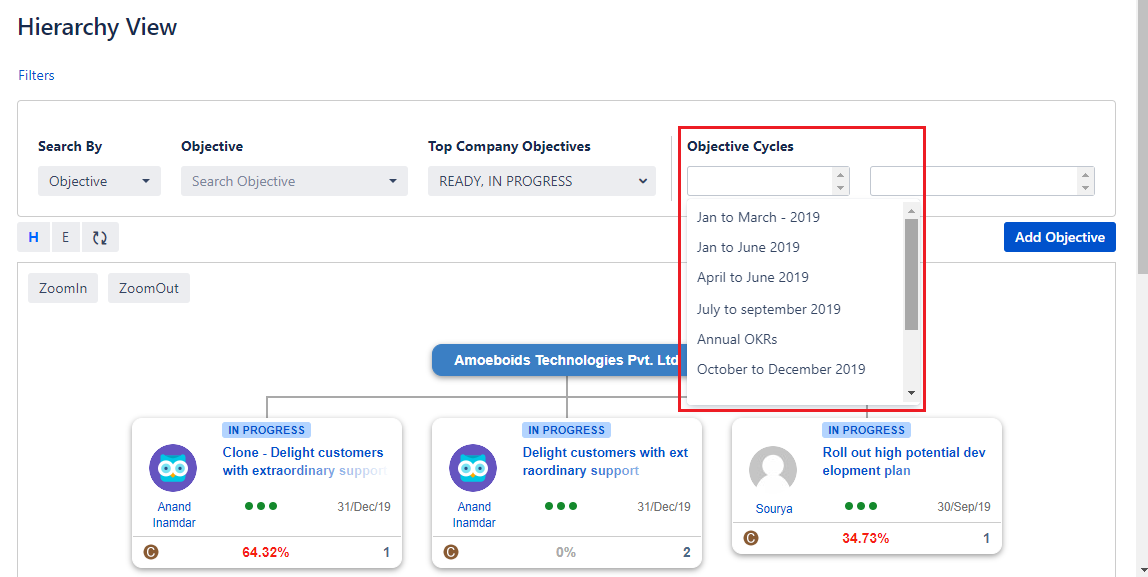 Image Removed
Image Removed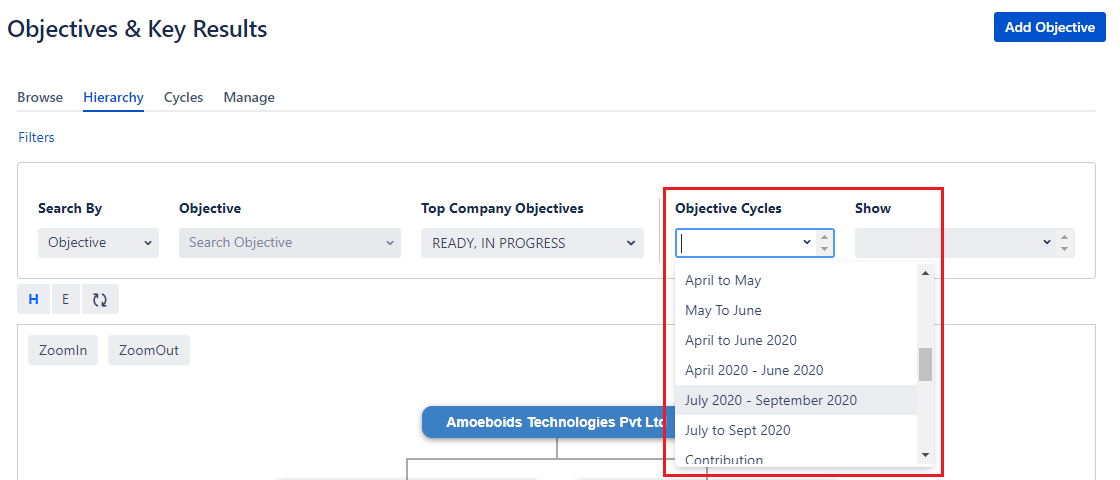 Image Added
Image AddedShow (contained issues in epics, key results, KR actions, issues in epic, sub-tasks in issues)
Over time, when you will have hundreds/thousands of objectives in the system, the number of KRs may go up almost by three-five times of a number of objectives. It will increase more when you will have KR actions, issues and subtasks aligned. In such case, hierarchy view becomes a bit difficult to handle and search for the exact alignment you want. That is why we have this option called 'show' which contain a few more options related to KR actions and Jira issues and epics as KRs.
To view objective hierarchy with Jira epics/issue & sub-tasks, KR actions, it's compulsory to select Key results options as KR actions and Jira epics/issues/sub-tasks are associated with KRs. So first select key results option and then anyone or all other options in the drop-down to view alignment of your choice.
When you remove Key results/all other options from show field, the system will only show objective alignments according to applied filters. Image Removed
Image Removed
 Image Added
Image AddedHow to add new alignments from hierarchy view page
At the moment, new alignment of objective from can be created only from hierarchy view. Just hover over the bottom right corner of the objective you want to add create an alignment with and you will see a '+ Icon'. Click on that '+ Icon' and create new alignment from the given popup same as you create one from objective detail page. 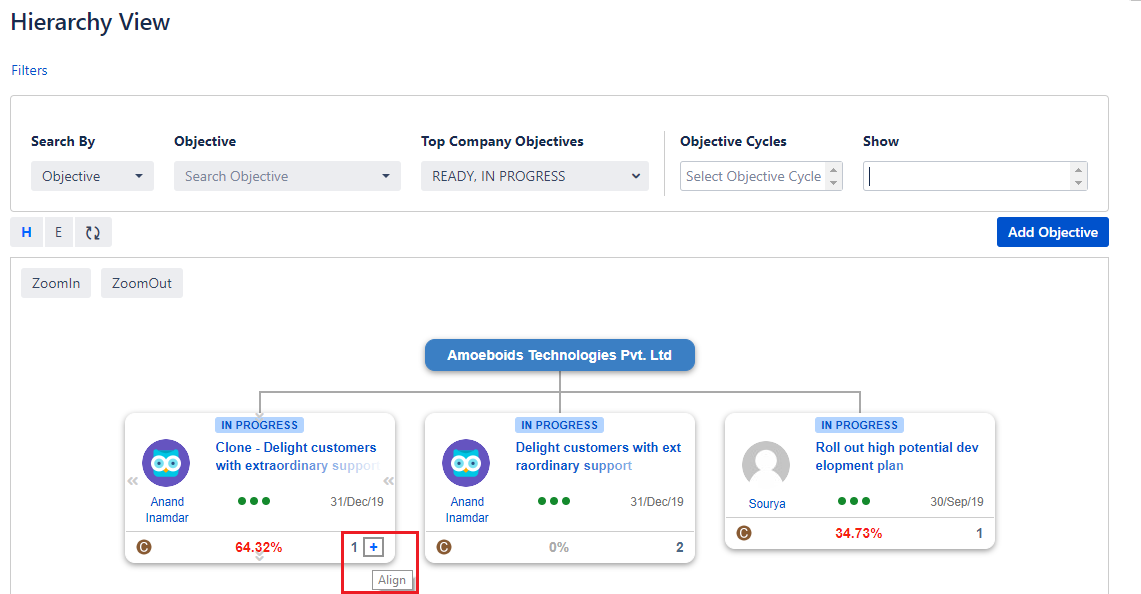 Image Removed
Image Removed
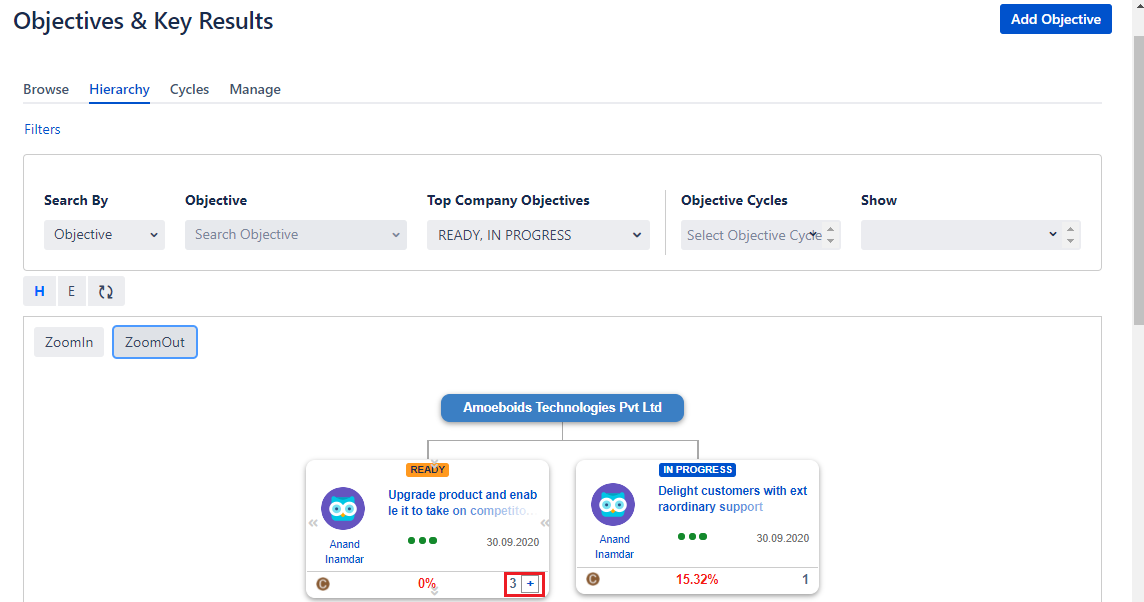 Image Added
Image Added| Note |
|---|
On hierarchy view, you can only create alignments to 'receive a contribution from' other objectives. For 'contributing to' alignments you need to navigate to that particular objective detail page and create an alignment from there. |
How to identify alignments, KRs, KR actions
When you have a lot of alignments & KRs you need to understand how to identify or differentiate these attributes of alignments. Employee Success UpRaise makes it very simple for you by giving different symbols for it. You might have noticed on objectives & KR page that every objective level is differentiated with a special symbol that shows the first letter of OKR Level, Eg. I for Individual. objective detail page when you have multiple KRs added in an objective, those are defined with specific symbols.
Objectives
In this way, 'I' sign is for 'individual level objectives', 'T' sign is for 'team level objectives' & 'C' sign is for 'company level objectives'. With the help of these signs/symbols, you can identify which level of the objective is aligned with the other objective. Image Removed
Image Removed
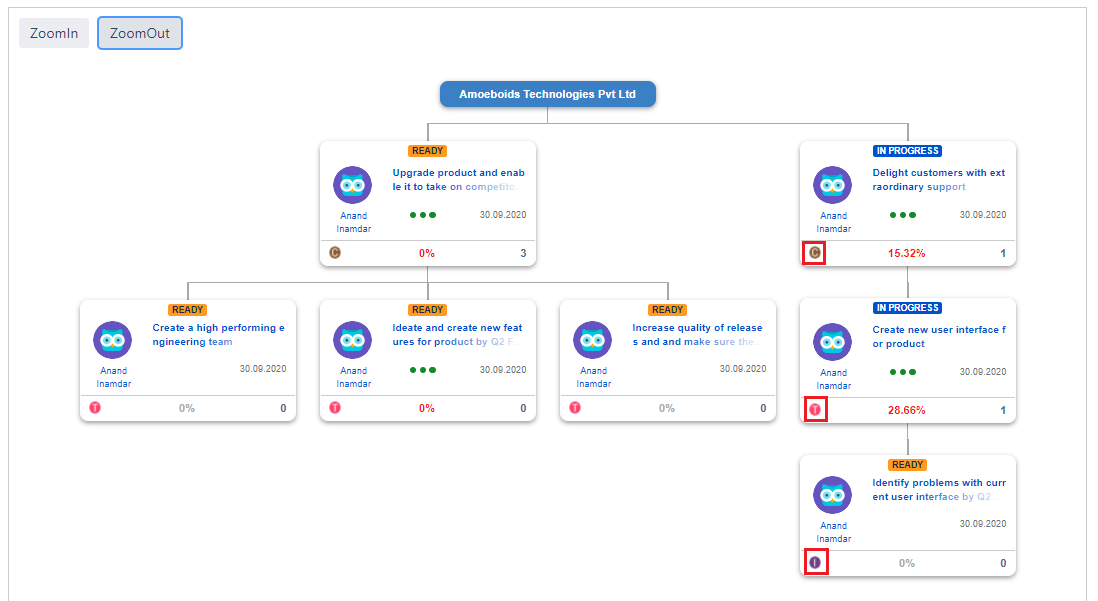 Image Added
Image AddedKey results
Starting from the first key result in above image, 'key icon' is for metric type key results, 'checkbox icon' is for to do type key results, 'checkbox highlighted in blue Icon' is for Jira Issue type key results and the last one is again for Jira Issue type (When added a Jira Epic as Key Result) key results. These all same symbols/Icons will get displayed for objective alignments and key results associated with all objectives.
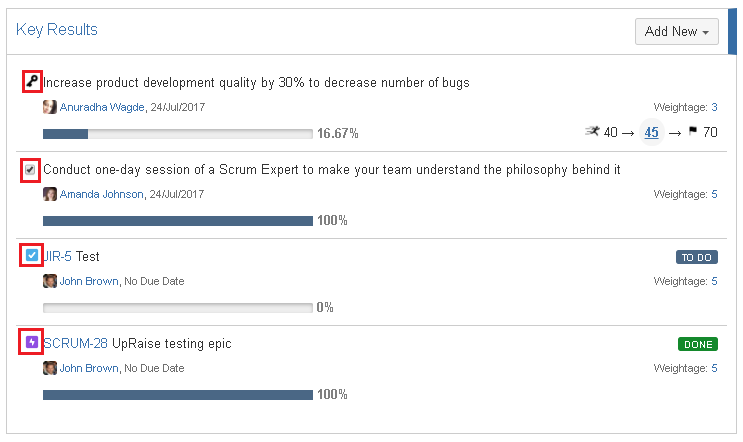 Image Modified
Image ModifiedKR Actions
Similarly, KR actions can be identified if Jira issues/epics are associated with metric or to do type of KRs.
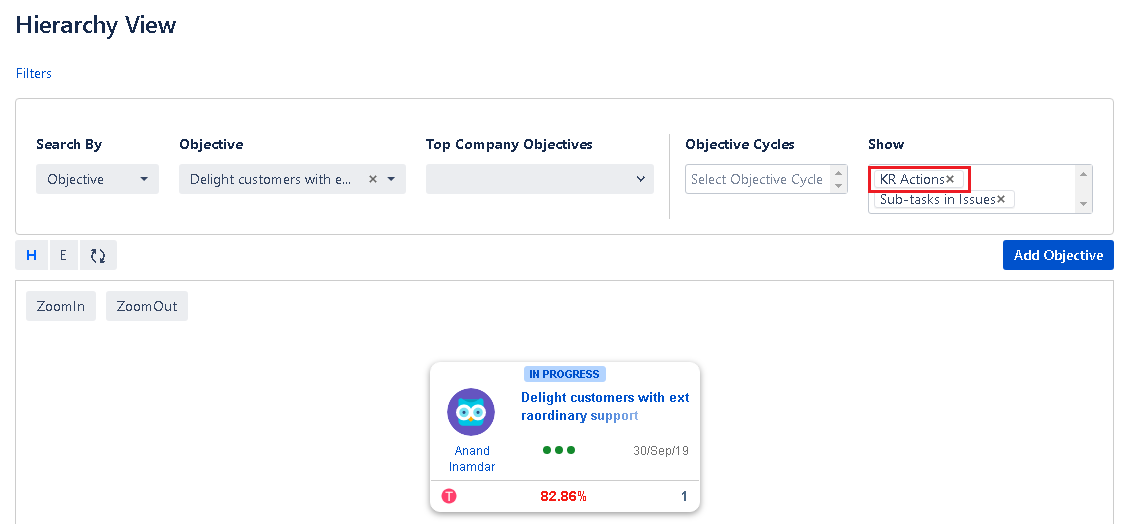 Image Removed
Image Removed Image Added
Image Added
Other options
ZoomIn & ZoomOut
As shown in above images, you can zoomIn and zoomOut the hierarchy view. 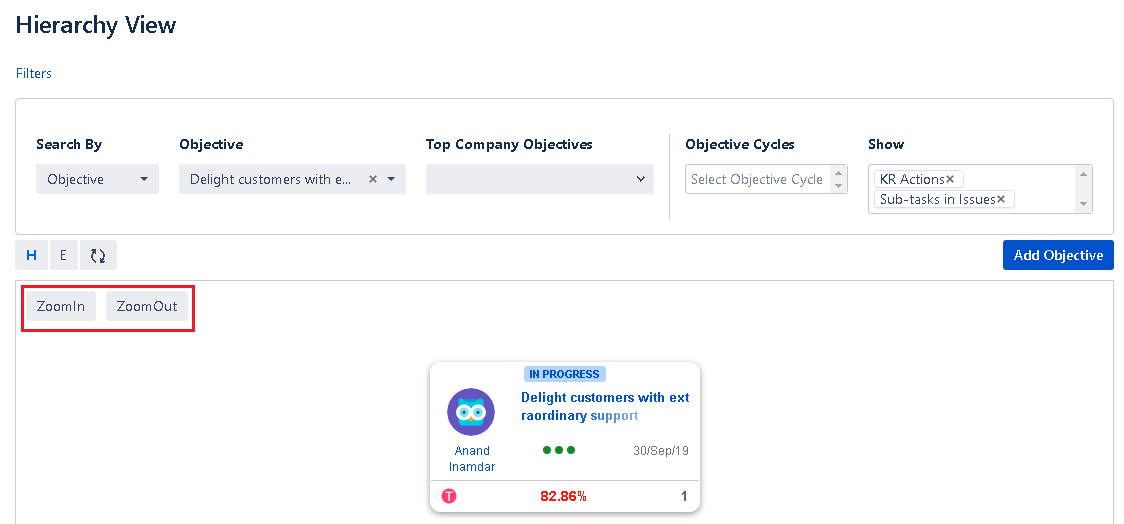 Image Removed
Image Removed
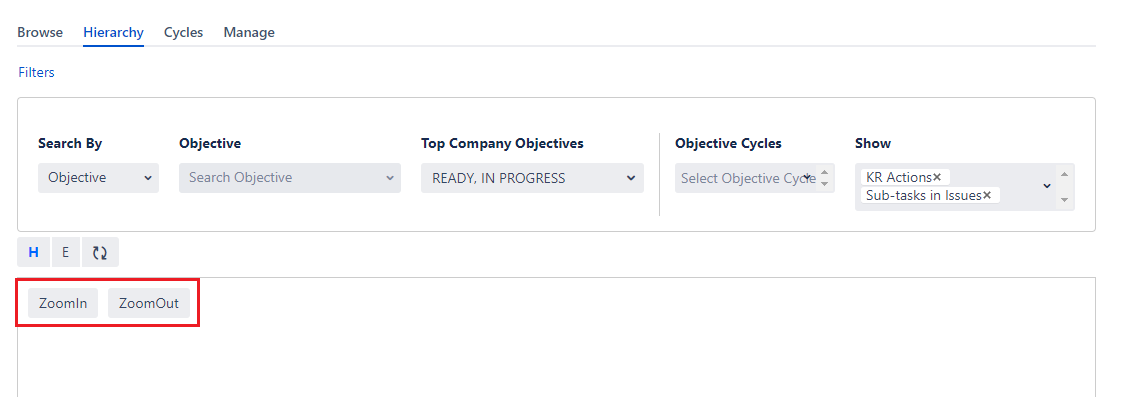 Image Added
Image AddedExpand the hierarchy of objectives
This view also allows you to expand the objective alignment hierarchy towards top or bottom. When you mouse search for a specific objective and apply the filter, system allows you expand it by up and down arrows when you mouse over on the searched objective. 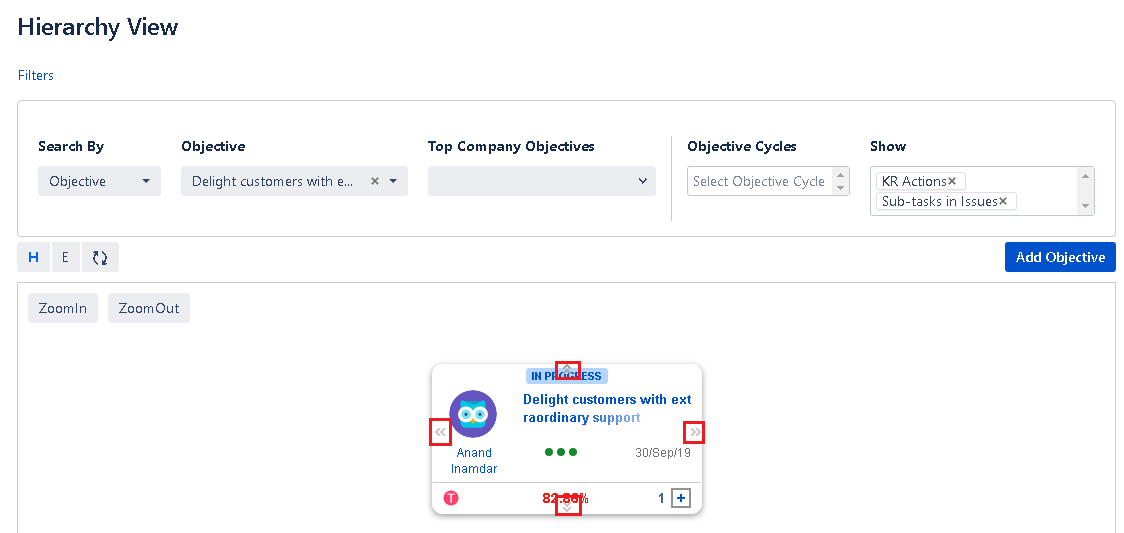 Image Removed
Image Removed
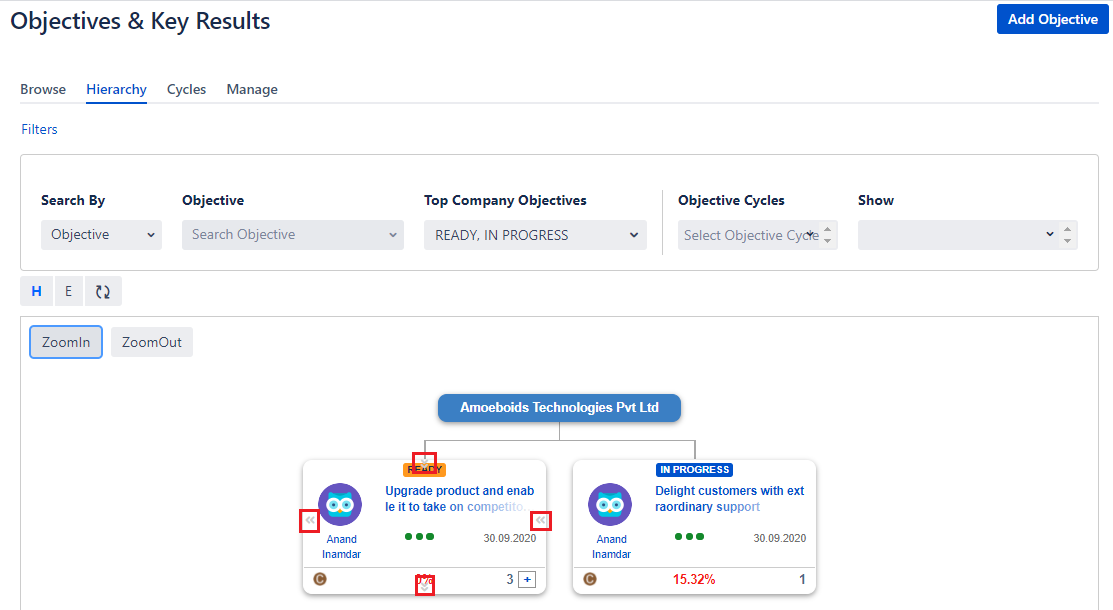 Image Added
Image AddedIf there is/are any objective alignment/s above the search objective, you'd find and up arrow on
mouse overmouseover which expands the upper alignments till the last aligned objective in the loop/alignment.
On this page
| Table of Contents |
|---|
In this sectionthis section
| Child pages (Children Display) | ||
|---|---|---|
|
Past versions
| Child pages (Children Display) | ||||
|---|---|---|---|---|
|